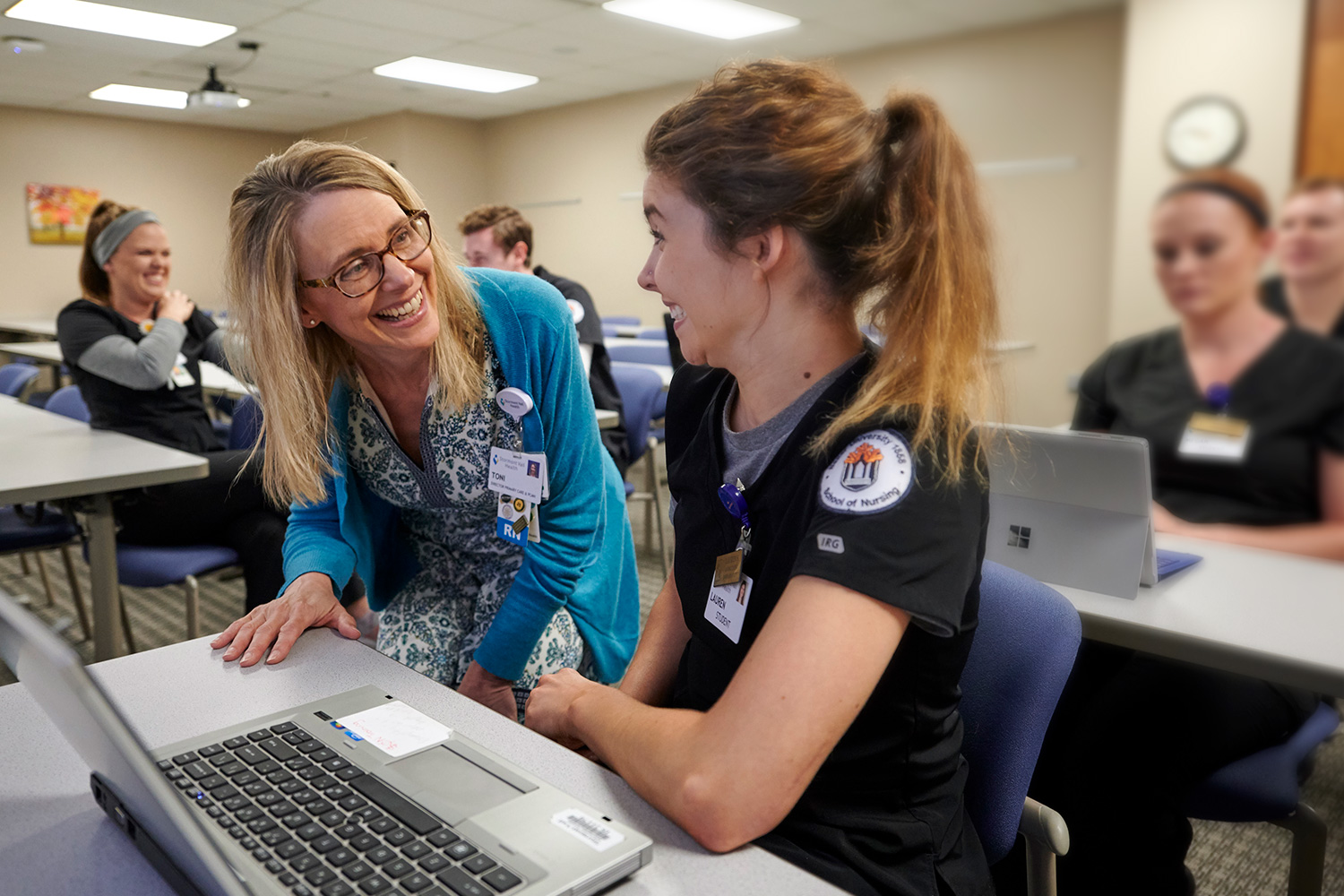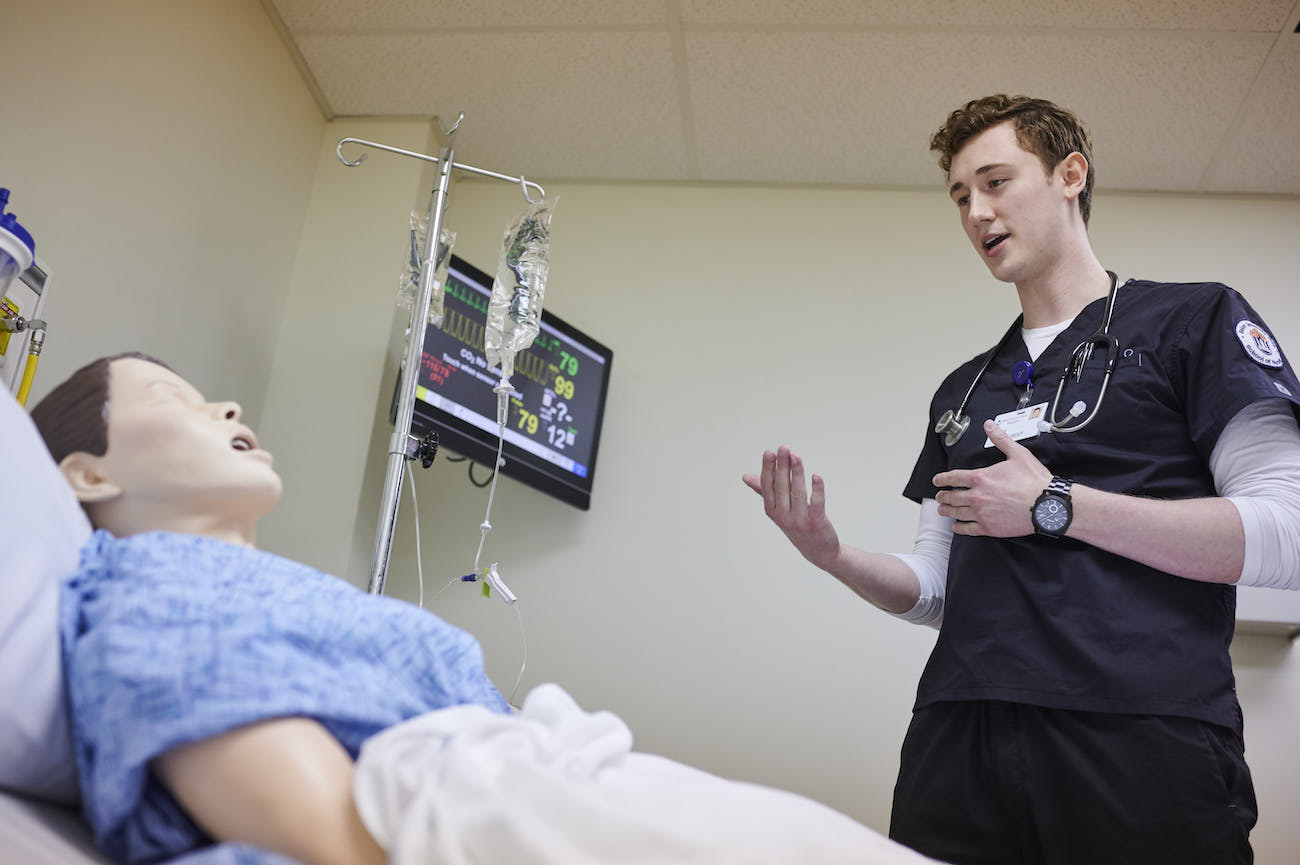
Marlene Eicher
School of Nursing
Associate Dean of Graduate Programs
Nursing Education Today: How Nursing Programs Are Evolving
About
As one of the most trusted professions in the world according to Gallup, nursing has become a vital part of health care. The career paths available to nurses today look vastly different from even just a few decades ago.
As a result, trends in nursing education are evolving to keep up with industry changes. Learning the most basic nursing skills is no longer enough. Critical thinking, leadership, and risk management are just a few of the soft skills that today’s nurses need to practice successfully.
Changes in nursing education and curriculum are driven by new trends in nursing and changing nurse education requirements.
The health care climate is changing the field of nursing, too. Nursing shortages, an increasingly elderly population, and a demand for lower-cost health care are spurring schools to rethink nursing education today.
Nurse Education Requirements: Did You Know?
- Regardless of the degree you choose, nurses need to pass the National Council Licensure Examination (NCLEX) exam to become a licensed registered nurse (RN) in their state to be able to work without direct supervision and complete critical care tasks. Currently, 65.2% of RNs are prepared at the baccalaureate level or higher, according to the Journal of Nursing Regulation.
- An Associate Degree in Nursing is required in order to meet minimum nurse education requirements, but several employers and states will only hire nurses with bachelor’s degrees or advanced nursing degrees.
- Employers now seek nurses who can deliver the higher complexity of care required in many of today’s health care settings. This is driving trends in nursing education to focus on reducing risk and improving safety and productivity.
- Most hospitals and health care settings expect their nurses to hold a degree from an accredited nursing program to ensure that certain education standards are met. For example, Baker University’s School of Nursing is accredited by the Commission on Collegiate Nursing Education (CCNE).
Health Care Trends Advancing the Nursing Profession
As the needs of patients change, technology develops, and treatment options expand, the nursing profession also advances. That’s why it’s important for nursing students to invest in quality education—whether you’re studying to become a nurse for the first time or returning to school to keep up with these innovations.
These transformations also call for new nursing skills—even for professionals who have been practicing for years. Here are a few trends that are reshaping nursing education today.
New nursing specialties. In the past decade, innovative nursing specialties have developed to educate nurses on new technology and health care demands. Nursing informatics, quality management, case management, health policy, nurse education, forensics, and mental health specialties are just a few examples of the new opportunities that exist beyond the bedside.
Increases in telehealth. The pandemic accelerated patients’ reliance on telehealth, and that trend is here to stay. It can reduce health care costs and provide greater access to care for a wider group of patients. This means nurses need to know more about things like HIPAA compliance, patient consent, and providing high-quality care in a virtual environment.
Expanding nursing roles. Nurses are needed in environments beyond hospitals and health care clinics. New roles are opening up for nurses in schools, at theme parks and major entertainment venues, within workplaces, and even in criminal justice environments. In some cases, nurses are also creating their own businesses to provide care in rural areas that need nursing services.
Emerging health care tech tools. In addition to interacting with digital medical records, nurses must now work with technology ranging from smart beds and wearable devices to mobile apps and even AI and robotics. These advances allow you to spend more valuable time caring for patients and enhance health outcomes in the process.
New Trends in Nursing Education
Today’s nurses are expected to enter the workforce ready to make a difference—with the ability to confidently use new technology, lead teams, and take on increasingly important responsibilities.
To empower nurses with the new skills they need, changes in nursing education are necessary. Here are just a few ways that nursing education today is being reshaped to meet the needs of employers and students.
Clinical placement assistance. To develop confident, compassionate, in-demand nurses, trends in nursing education today now incorporate clinical experiences, health simulation technology, and first-hand observation. This helps not only with bedside manner and teamwork, but also with NCLEX pass rates and job placement.
Preparation for licensure. Because all nurses require licensure before they can provide patient care, this has led to changes in nursing education. The right nursing program will prepare you not only for patient care and communication, but also for licensure exams so you can find the job you want faster—with no additional training or studying needed.
Evolving curriculum. As health care changes, so does nursing education today. Nursing programs now balance hard and soft skills, making sure graduates know how to support mental health, strengthen clinical partnerships, manage change and uncertainty, make ethical decisions, and use emerging tools and technology to improve patient care.
Online advanced nursing degrees. Even just a decade ago, the majority of nursing education happened in the classroom. But nursing education today often involves flexible, online learning. This allows you to work full time while you earn a degree so that you don’t have to leave your job or spend time away from family. Baker’s advanced nursing degrees even allow you to switch between full and part time or pause for up to 12 months based on other commitments.
Shorter programs. Changes in nursing education also mean that students today can learn more than they ever thought possible in a shorter amount of time. For example, Baker’s online advanced nursing degrees can be earned in as few as two years, depending on transfer credits. This makes nursing education today much more practical and affordable.


